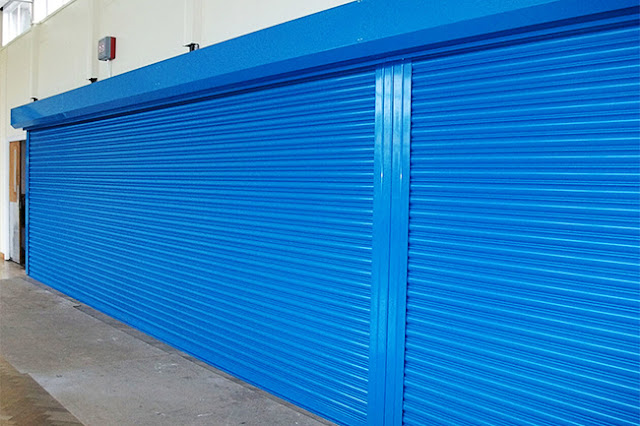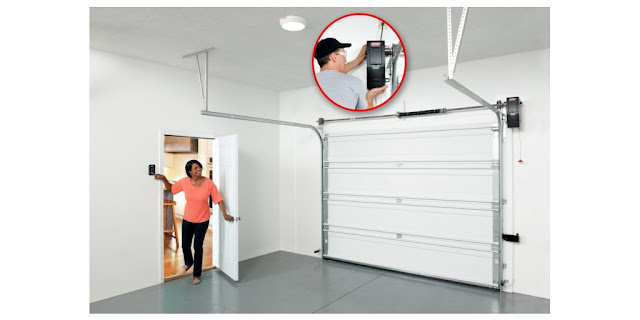Garage Door
If you've ever driven through Levittown, Long Island, you've seen the paradigm of post-World War II housing. Designed for the young parents who were giving birth to the baby boom generation, Levittown houses were built in accordance with the principles of pre-fabricated housing constructed for servicemen, but they incorporated the "must-haves" of post-war life: big yards, modern appliances, a television antenna, and other conveniences. Promotional photos for Levittown over a period of years show that the evolution of the garage followed major trends in the changing American lifestyle.
The earliest house plans from the 1940s show boxy, Cape Cod-style homes with a living room, dining room, bath, and two bedrooms. There were no driveways: the single car owned by most families was parked on the street. By 1950, the company brochure offered five houses in a modified Cape Cod/Ranch style, each with a driveway leading to a single attached carport. And in the sister suburb of Levittown, PA, in 1954, the developers presented a variety of homes that incorporated the latest essential in home design - an enclosed garage.
Today, if you drive through even the most moderate suburban neighborhood, you're likely to see a gaping, two- or three-car garage opening directly onto the street, with living quarters sprawling behind and above. The garage has become the façade of the modern American home.
The growth in the importance of the garage has coincided with the presence of more and more cars in the typical American family. When Henry Ford lowered the price of his Model T so that "the workers who build them can afford to buy them," the option of owning an automobile became a reality for families of modest means, and through the decades from 1910 to 1930 car ownership grew steadily.
Auto sales fell as World War II limited both income and the availability of raw materials, but millions more women learned to drive as they filled jobs previously held by servicemen. By the time the subdivision building boom began shortly after the war, nearly any young couple could afford a house for $8,000 and an $800-dollar station wagon. Typically, after driving her husband to the commuter train station, the housewife used the car to shop and run errands. (African American and other minority families, including Jews in many suburbs, were shut out of housing opportunities by restrictive covenants in the North and Jim Crow laws in the South. But that's another story.)
Soon, though, a single car wasn't enough: Dad wanted the family car, and Mom needed her own. By the 1960s, it was not uncommon for a teen to get a vehicle - often a grandparent's old car - for his 16th birthday. Instead of parking on the street or under a single carport, a family now needed at least a double garage plus room to park a third or even fourth vehicle. Today, in addition to a garage for two cars (or, more likely, one car plus an attic's worth of clutter), many suburban and rural homes include an additional, oversized garage for the RV.
Garage doors have changed, too. The earliest ones in the late 19th century were simply barn doors that allowed a farmer to bring a horse-drawn buggy into the garage for loading and unloading or storage out of the weather. They hinged outward or rolled sideways on steel tracks like a sliding closet door and were used for mechanized vehicles - tractors, cars, and trucks - as they came into wider use. Carriage houses, originally built by the wealthy for horses and carriages, also began to hold automobiles.
By the early 1920s, as more and more middle-class families could afford Model Ts, a modified version of the garage appeared. Usually a small shed (often only eight or ten feet wide), the garage wasn't wide enough for a sliding door. A single hinged door would be too heavy and ungainly to move, so a split, hinged door, each half three or four feet wide and seven to eight feet tall, was used instead. These old wooden doors can still be seen in rural areas; they often look homemade, with small windowpanes and one-by-six-inch diagonal cross-braces across the front. But their weight put great stress on hinges, screws, and the frame, and, when there was snow on the ground, it had to be shoveled out of the way before the doors could swing open.
Find Garage Doors in
Cities Mentioned below:
·
Garage door repair Burlington
·
Garage door repair Etobicoke
·
Garage door repair Mississauga
·
Garage door repair Newmarket
·
Garage door repair North
York
·
Garage door repair Pickering
·
Garage door repair Scarborough
·
Garage door repair Woodbridge
·
Garage door repair Richmond
hill



Comments
Post a Comment